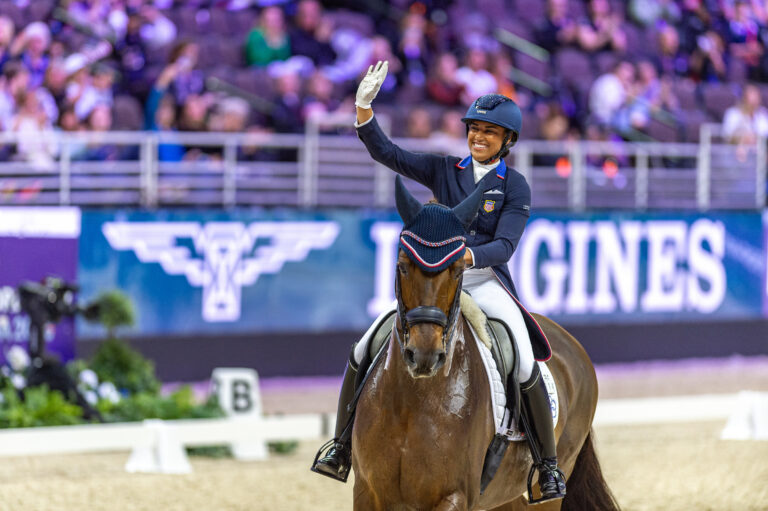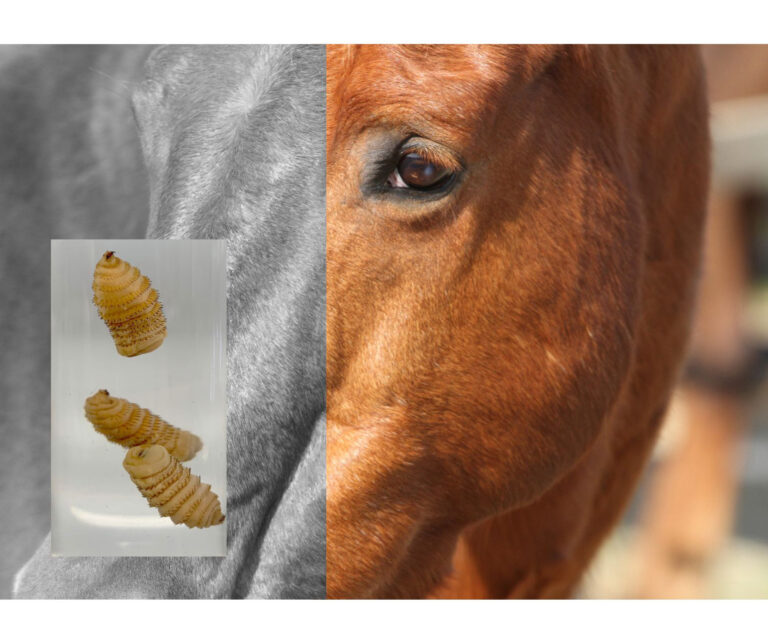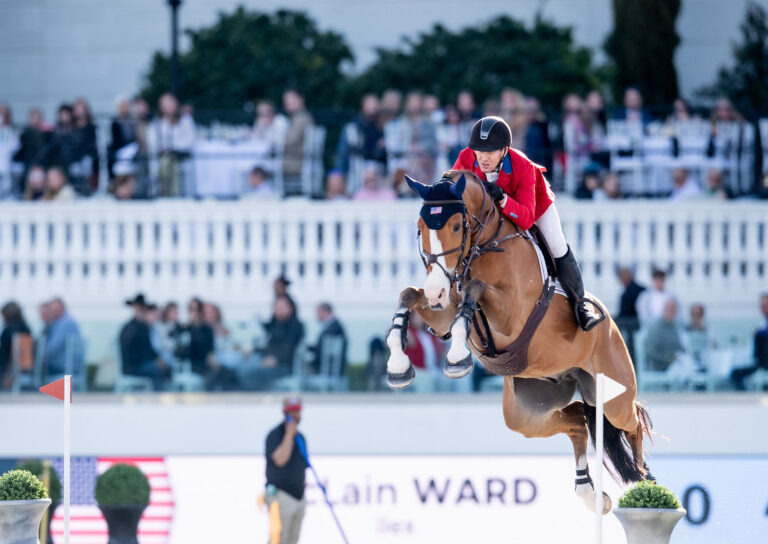The sport of eventing demands enormous athletic ability from both horse and rider in general. Cross country is arguably the most grueling phase as it requires the challenging combination of precision, speed, balance, adjustability and confidence.
But you can tackle and improve all of these skills by developing solid habits on the schooling field and always striving to make cross country a positive experience for your horse.

Here, I’ll teach you how to develop good cross-country habits to help you navigate upper-level courses with confidence and consistency. You can then start to incorporate these practices into your schooling routine, so they’ll become second nature at competition. Success in cross country is always a process and requires patience, practice and keen attention to the small details that will add up over time.
Landmarks for Lines
One of the most valuable habits you can develop on cross country is using landmarks to find and maintain your lines to fences. While schooling or when you walk the course before a competition, locate identifying objects like rocks, trees, patches of grass or anything else that can serve as an indicator for your distance to a particular fence. For example, at this rock, I know I’m two strides out to Fence 4 or whatever question you’re facing.

You can also use these objects as reminders for what you need to do on certain parts of the course. To master corner approaches, for instance, I might find a particular tree on the approach to the corner fence to remind me where to turn. Or at this rock, I need to start counting my strides for the next fence.
To improve adjustability, practice getting longer and shorter distances going over the same fence. For the longer distance, stay on a slightly wider track through the turn if you end up needing more space. When going for the shorter distance, use your landmark to remind you to slow down and get really square to fit in as many strides as you can. If you’re ever uncertain, shorten to squeeze in more strides. Patience is key and you have to teach your horse that, too.
Practice Precision
You need to practice and perfect creating the approaches you want at home and get so good at riding them to specific elements that you literally dream about it. That’s how you reproduce the ride you want any time you need to.
Angled fences present a situation in which precision counts. You need a positive, forward horse, but you shouldn’t be on a flat and too-open stride. For angles, it’s important that your horse is balanced because the fences might look a little different to him and you want to ensure it’s a good experience for him.

For sharply angled fences, aim to brush the inside flag with your leg; you don’t want to give your horse an opportunity to run out, but he also needs to learn how to jump these types of fences. As you go into an angled fence, slightly lengthen your reins and widen your hands to funnel your horse to the jump. This will help you to correct his position if he starts to wander. Also, if you’re too far up your horse’s neck, it will be harder to make the correction.
Make Mistakes and Self-Correct
Most of us—and that includes both horse and rider—aren’t clever enough to know exactly what balance and speed we need heading to a jump. But you have to learn how to set the tone on where you want to go, especially on tricky combinations. You will make mistakes—lots of them. But the goal is to learn each from each one, so you’re prepared to make the correction the next time.
Let’s take, for example, a cross-country schooling exercise involving two narrows on a turn with a drop on landing. We’ll jump them both directions—first on a left turn going slightly downhill and then on a right turn going slightly uphill.
Going downhill, be prepared for the left turn over the first fence. As you turn, steady and get your horse back on a shorter, 10-foot stride and wait for the second fence. You can’t land and just charge at the second jump or drop your reins and say, “Here, you do it,” to your horse.
You have to land and be in control of your turn to shorten your horse’s stride. Your job is to bring him in at the right speed, the right length of stride and the right balance so he can best use his body over the fence. Then, he also has to learn how to be respectful of the jump.
When you practice this exercise going uphill, you have to attack it a bit on landing and then shorten up at the end. After the first fence, land with a plan to turn right and get your horse going so when the incline gets a little steeper as you lock on to the second fence, you have some power. Then, most horses will naturally shorten up and just pop over the second narrow.
Water-Jumping Habits
Especially if you’re on a greener horse or one who’s new to water, it’s always a good idea to introduce him to any water area before galloping and jumping through it. During your warm-up, walk, trot and canter through the water in both directions to allow him to get a feel of the depth.

On your approach to a water combination, such as a gallop through water to a bank and then a bounce, you need power, but you don’t want to go for a super-long distance. As you’re coming through the water, focus on maintaining an even rhythm and balancing your horse before the technical elements. On the last couple of strides, lengthen your reins and sit back to let the bounce come up naturally.
Some horses are prone to running out on the bounce in this type of combination. If, for example, your horse tends to run out to the left going into the bounce, get him more comfortable with the element by picking up a right-lead canter and cantering on a circle through the bounce (in between the bank and second element of the bounce). Once he’s confidently circled a few times, come in to the second element at an angle in a sitting trot and just pop over it to boost his confidence. Then, try cantering it still on an angle and aim to jump exactly in the middle of the jump. Finally, canter it again and try to jump the second element as far to the right as you can.
Now, go back and put the whole combination together being mindful of the potential runout. It’s important to maintain soft hands, but you also want to get in there a be a little aggressive and attack the combination.
Position is always crucial for your safety, success and effective communication with your horse, but sometimes your rides on cross country aren’t always beautiful because you have to get in there and react, react, react and keep your head in the game every second in order to always expect the unexpected. As we know, things often don’t go according to plan in our sport, so lightning-quick adaptability is key on cross country.
Soft Control
Another cross-country schooling exercise is a sunken road (a down bank, followed by one or to strides to an up bank is one variation example). Here, your goal is to prevent your horse from jumping out too far from the bank going down to have room for the bounce out to the second bank going up. If he lands too far out from the first bank, he’ll really have to back off to make the striding. This can be challenging if you’re on a hotter or more aggressive horse, but the key is to get him to come off quietly so you can ride at the second element.


Be careful, however, not to hold your horse too much. This will more than likely cause him to jump out farther because his legs will be more extended on landing. So maintain contact but be soft so he doesn’t brace against you. You don’t want him coiled up like a spring about to explode. You have to get him back, and then let him go. Don’t take any opportunity to move up to the first bank—if you can trot it, even better. Then, you can land and be more aggressive through the bounce.


Basics: Less is More
Always strive to do the least amount jumps you can during a cross-country schooling session but do them well. Quality over quantity goes a long way. It’s important to create multiple good experiences for your horse, so you continue to build trust.
Don’t place all your emphasis on finding the perfect distance every time. If you don’t see it, simply sit up, hold your body and wait, just in case you’re a bit wrong or your horse hesitates. Maintaining this good upright position and solid leg-to-hand connection will also help you easily recover from any mistakes.
For More
- Learn how Phillip Dutton keeps his eventing horses happy, healthy and performing at the top of their game with his savvy training strategies and over wellness program here.
- You can watch Phillip Dutton’s EQUESTRIAN+ video series on developing good cross-country habits here.
- Can’t get enough of eventing? Don’t miss our first livestream of the Galway Downs International Horse Trials CCI3* and CCI4* competition on EQUESTRIAN+ from March 28 – 30, 2025. Register here to watch the action live for free.
About Phillip Dutton
Phillip Dutton is a seven-time Olympian and three-time Olympic medalist. Originally from Australia, he represented his home country in three Olympics and four World Championships. He became an American citizen in 2006. Since then he has represented the U.S. in four Olympic Games and three World Championships. His most recent Olympic appearance came aboard Z at the 2020 Tokyo Olympic Games. There the U.S. team finished in sixth place. Phillip and his wife, Evie, own, manage and train out of two farms. These include True Prospect Farm in West Grove, Pennsylvania, and Buck Ridge Farm in Loxahatchee, Florida.













